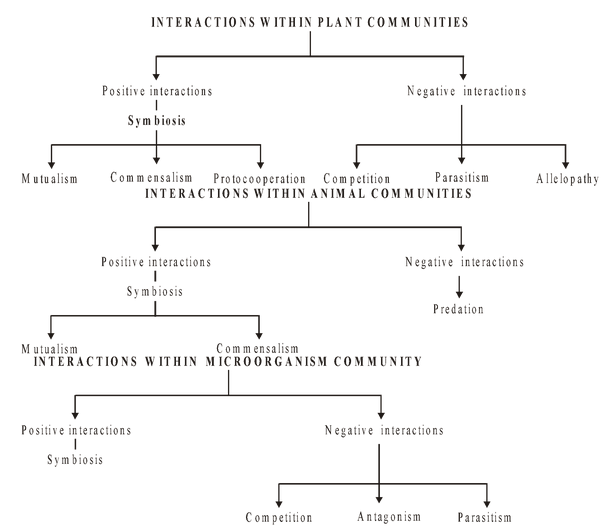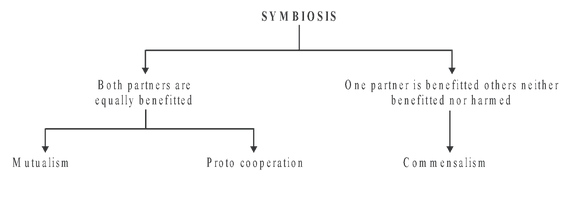
Ecological Interdependence And Interactions
Organisms And Their Environment of Class 12
BIOTIC COMMUNITY
A biotic community is defined as a ‘Natality occurring assemblage of plants, animals and microorganisms living in the same environment, mutually sustaining and interdependent, constantly interacting for utilizing the dissipating energy and available resources. A community develops by aggregation of several populations. Size of community may be small or large. Ponds, lakes, plateaus, meadows are representing the smaller communities, whereas, forests, grasslands, savanna, or deserts are representing the larger communities.
In an ecological system, plants, animals and microbial organisms form their own separate communities. In each community, all the species are not equally represented, a few of them dominate over all other species and thus exert major controlling effect on the community on the whole. Such species are called the dominant species, e.g., a forest which is dominated by deciduous species like sal or teak, or a forest which is dominated by conifers like pines and deodars. In a Sal forest, although there may be found several hundred species of herbs, shrubs, trees and lianas, but due to predominance of sal trees, the forest is named as ‘Sal Forest’. Each community is often characterized by its species composition, biodiversity, dominance, abundance, density and developmental history.
In a biotic community, the community of plants, animals and microorganisms interact with one another for sharing energy, resources and space. Plants provide food, shelter and oxygen to animals and in turn the animals provide carbon dioxide, plough the field and help in pollination of flowers and dispersal of seeds and propagules. The microorganisms interact with plants and animals in many ways, such as they may cause diseases, they may fix nitrogen, they may help in increasing or decreasing soil fertility and they may decompose the dead organic remains and reduce their complex organic molecules to simple inorganic molecules in soil for recycling. All these organisms are equally important for maintaining ecological balance of earth and for proper functioning of the ecosystem. They share in flow of energy and mineral or nutrient cycling, the two important functionings of the ecosystem.
In a biotic community, plants interact with other plants, animals interact with other animals and microorganisms also interact with themselves but interaction between plants and animals, animals and microorganisms and microorganisms and plants also occurs. It plays in important role in community dynamics.
SPECIES INTERACTIONS
Interaction refers to a relationship of ‘Give and Take’.
Depending upon the nature of effect on the interacting organisms, the interactions between populations of a species in a community are divided into two types. They are
- Positive (beneficial) Interactions
- Negative (inhibition) Interactions
In positive interactions, both the partners are equally benefitted, neither is harmed (as in case of symbiosis which includes mutualism, commensalism or protocooperation). However, in commensalism, only commensal derives benefit, not the support.
In negative interactions, usually one partner harms the other for deriving benefits for their own survival.

INTERACTIONS WITH POSITIVE EFFECTS (POSITIVE INTERACTIONS) SYMBIOSIS
A symbiosis relation is an unique form a communal life beneficial coaction and positive interactions between theindividuals of two or more species living together in intimate. In such association, either one or both the species are benefitted but neither species is harmed. Symbiosis is a wide spread phenomenon and it includes mutualism, commensalism and protocooperation. Symbiosis exhibits two basic patterns, viz., facultative symbiosis and obligate symbiosis.







